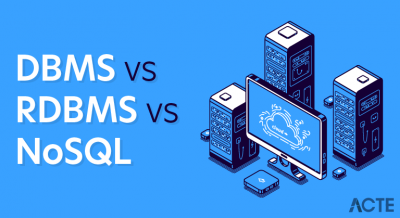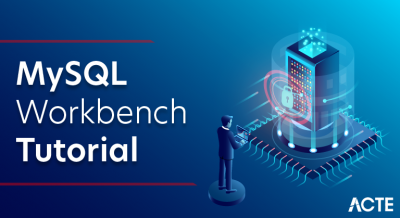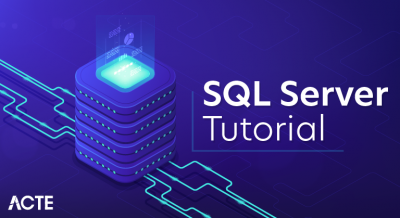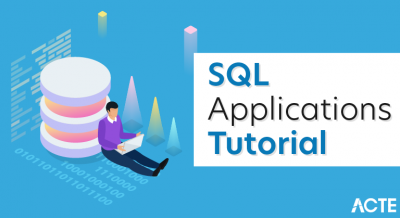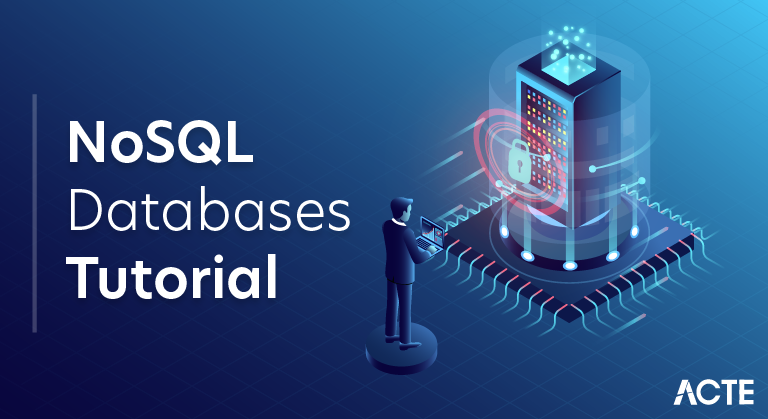
NoSQL databases, also known as “Not Only SQL” databases, represent a broad category of database management systems that differ from traditional relational databases in their ability to handle unstructured, semi-structured, and structured data. They are designed to scale out by using distributed architectures, which makes them highly suitable for large-scale data storage and real-time web applications. Unlike relational databases, NoSQL databases do not rely on fixed table schemas, allowing for more flexible data models such as key-value, document, column-family, and graph formats.
What is a NoSQL Database?
A NoSQL database, short for “Not Only SQL,” is a type of database management system that diverges from traditional relational database models by allowing for the storage and retrieval of information in formats different from the tabular relations seen in relational databases.
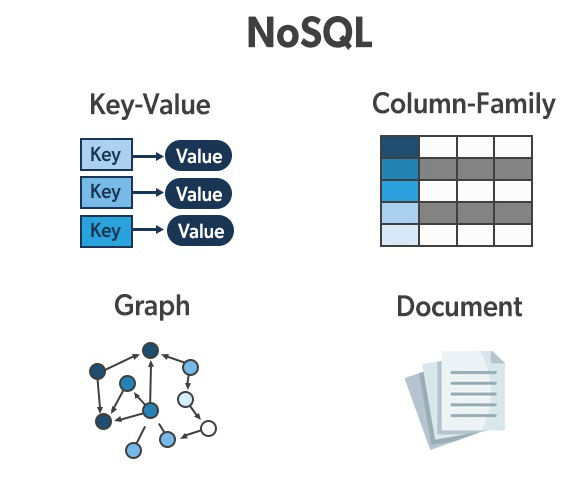
NoSQL databases can handle numerous data models, such as key-value, document, column-family, and graph formats. They are particularly adept at managing large volumes of unstructured, semi-structured, and structured data, making them suitable for applications that require high performance, scalability, and flexibility.
These databases are commonly used in big data and real-time web applications, where they can efficiently scale out across many servers. Examples of NoSQL databases include MongoDB, Cassandra, Redis, and Neo4j, each offering unique strengths tailored to specific data storage and retrieval needs.
What are the benefits of using a NoSQL Database?
- Scalability: NoSQL databases are designed to scale out horizontally by distributing data across multiple servers. This makes them ideal for handling large-scale data and high-traffic applications without compromising performance.
- Flexibility: They allow for flexible data models, accommodating unstructured, semi-structured, and structured data. This flexibility supports rapid development and iteration, as the database schema can evolve with application needs.
- Performance: NoSQL databases can provide high performance for read and write operations due to their ability to handle large volumes of data and distribute workload across many servers. Real-time applications significantly benefit from this.
- Big Data: NoSQL databases are well-suited for big data applications that require the storage and analysis of massive datasets. They can efficiently manage and process vast amounts of data generated from various sources.
- Variety of Data Models: NoSQL databases offer different data models such as key-value, document, column-family, and graph. This variety allows developers to choose the best model for their specific use case, enhancing application efficiency and performance.
- Cost-Effectiveness: They often run on commodity hardware, making them more cost-effective than traditional relational databases that might require expensive, high-end servers for similar scalability and performance.
- Cloud Integration: Many NoSQL databases are designed to work seamlessly with cloud infrastructure, enabling easy deployment, scaling, and management of databases in cloud environments.
Overall, NoSQL databases provide a robust solution for modern applications requiring high scalability, flexibility, and performance, particularly in environments dealing with large-scale and diverse data.
Exploring the Best NoSQL Database Tutorial Options1. Introduction to NoSQL
NoSQL databases represent a diverse category of databases designed to address the shortcomings of traditional relational databases in managing vast amounts of unstructured or semi-structured data. Unlike relational databases, which adhere to a structured schema with predefined tables, columns, and relationships, NoSQL databases offer flexibility in schema design. They can store data in various formats, such as key-value pairs, documents, wide-column stores, or graph databases, accommodating dynamic and evolving data models more efficiently.
2. NoSQL Database Types
- Key-Value Stores (e.g., Redis, DynamoDB): Learn how key-value pairs are used to store data and suitable use cases.
- Document Stores (e.g., MongoDB, CouchDB): Understand how JSON-like documents are stored and queried.
- Column-Family Stores (e.g., Cassandra, HBase): Explore how data is stored in columns rather than rows for high performance.
- Graph Databases (e.g., Neo4j, ArangoDB): Learn about storing data as nodes and edges and how to query graph structures.
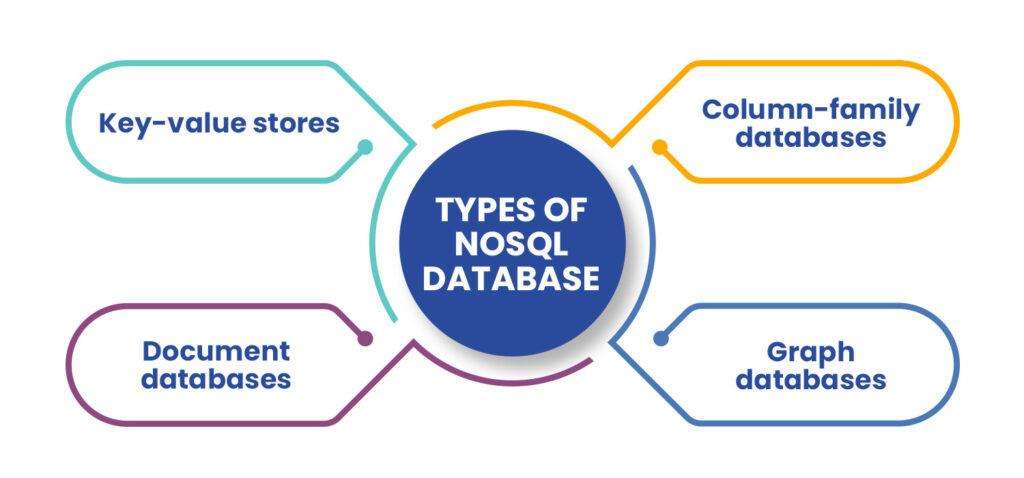
3. Core Concepts
- Data Models and Schema Design: Learn about the flexible data models in NoSQL databases and how to design schemas.
- CAP Theorem (Consistency, Availability, Partition Tolerance): Understand the trade-offs between consistency, availability, and partition tolerance.
- Sharding and Replication: Learn about data distribution across multiple servers and ensure data redundancy.
- Consistency Models (Eventual Consistency, Strong Consistency): Explore different consistency models and their implications.
- ACID vs. BASE Transactions: Compare ACID transactions in relational databases with BASE principles in NoSQL databases.
4. Setting Up NoSQL Databases
To get started with NoSQL databases, it’s essential to understand installation and configuration basics for various systems. Begin by following step-by-step guides tailored to each NoSQL database, such as MongoDB, Cassandra, or Redis, ensuring you meet system requirements and configure settings like data directories and security measures. Once set up, learning basic CRUD (Create, Read, Update, Delete) operations is fundamental. This involves understanding how to insert, retrieve, update, and delete data entries efficiently.
5. Advanced Data Modeling
- Designing Schemas for NoSQL Databases: Best practices for schema design tailored to specific NoSQL databases.
- Handling Relationships in NoSQL Databases: Techniques for managing relationships, such as embedding or referencing.
- Indexing and Query Optimization: Learn how to create indexes and optimize queries for better performance.
6. Performance and Scalability
- Horizontal vs. Vertical Scaling: Recognize the variations and benefits between vertical and horizontal scaling.
- Load Balancing: Learn how to distribute incoming network traffic across multiple servers.
- Data Partitioning and Distribution Strategies: Explore strategies for partitioning and distributing data to improve performance.
- Performance Tuning Techniques: Techniques to fine-tune NoSQL databases for optimal performance.
7. Security in NoSQL Databases
Implementing robust security measures for NoSQL databases involves several vital practices. Authentication and authorization are critical, ensuring only authorized users can access the database. This includes setting up user accounts with specific roles and permissions, enforcing strong password policies, and integrating with authentication services like LDAP or OAuth for centralized access control. Sensitive information must be encrypted in order to be protected in transit as well as at rest.
8. Use Cases and Case Studies
- Real-Time Analytics: Using NoSQL databases for real-time data analytics applications.
- Content Management Systems: Explore how NoSQL databases power flexible content management systems.
- Internet of Things (IoT): Learn about managing IoT data with NoSQL databases.
- Social Networks and Graph Applications: Understand the role of NoSQL databases in building social networks and graph-based applications.
9. Best Practices
- Data Backup and Recovery: Strategies for backing up and recovering data in NoSQL databases.
- Monitoring and Maintenance: Best practices for maintaining and monitoring the health of NoSQL databases.
- Versioning and Migration Strategies: Techniques for managing database versioning and migrating data.
10. Hands-On Projects
- Building a Simple CRUD Application: Develop a primary application to perform CRUD operations.
- Implementing a Real-Time Chat Application: Build a real-time chat application using a NoSQL database.
- Analyzing Social Network Data with Graph Databases: Use graph databases to analyze social network data.
- Managing Session Data with Key-Value Stores: Learn how to manage session data using key-value stores.
11. Tools and Ecosystem
NoSQL Database Management Tools (e.g., Studio 3T for MongoDB, OpsCenter for Cassandra): Explore tools for managing NoSQL databases. Cloud-Based NoSQL Services (e.g., AWS DynamoDB, Google Cloud Firestore): Learn about cloud-based NoSQL database services. Integrating NoSQL Databases with Big Data Tools (e.g., Hadoop, Spark): Understand how to integrate NoSQL databases with big data tools for enhanced capabilities.
12. Future Trends and Conclusion
- Emerging Trends in NoSQL Databases: Explore the latest trends and future directions in NoSQL databases.
- Challenges and Limitations: Understand the challenges and limitations associated with NoSQL databases.
- Conclusion and Further Reading: Summarize key takeaways and provide resources for further learning.
Comprehensive Guide to Installing NoSQL Database
Setting up a NoSQL database requires careful steps to ensure proper installation and configuration. Here is a detailed guide that covers the process for installing a typical NoSQL database, using MongoDB as an example. This guide will take you through each essential step, from preparing your environment to verifying the installation, ensuring you can effectively utilize the database for your applications.
1. Pre-installation Preparation
- Administrative privileges on the server or computer where you’ll install the database.
- The latest version of the NoSQL database software package is downloaded from the official website or repository.
- Examined the compatibility of the system with your operating system and its needs.
2. Installation Steps
STEP 1: Verify System Compatibility
Check the NoSQL database’s compatibility with your operating system (OS). Most NoSQL databases support major OS platforms, such as Windows, macOS, and Linux.
STEP 2: Install Dependencies (if necessary)
Some NoSQL databases may require additional software dependencies, such as the Java Runtime Environment (JRE), Python, or other libraries. Install these dependencies according to the database’s requirements.
STEP 3: Install the NoSQL Database
For MongoDB (Example):
On Linux (Ubuntu):
Add the MongoDB repository:
- sudo apt-get update
- sudo apt-get install gnupg
- wget -qO https://www.mongodb.org/static/pgp/server-5.0.asc | sudo apt-key add –
- echo “deb [ arch=amd64,arm64 ] https://repo.mongodb.org/apt/ubuntu focal/MongoDB-org/5.0 multiverse” | sudo tee /etc/apt/sources.list.d/MongoDB-org-5.0.list
- sudo apt-get update
Install MongoDB:
- sudo apt-get install -y MongoDB-org
On macOS:
Use Homebrew to install MongoDB:
- Use Homebrew to install MongoDB:
On Windows:
Go to the official website and download the MongoDB installer.
Run the installer and follow the on-screen instructions. Ensure that you select the complete setup, including MongoDB Compass (GUI).
Step 4: Configure NoSQL Database
If necessary, adjust the configuration files (`MongoDB.conf` for MongoDB) to specify the data directory, port number, and authentication settings.
Step 5: Start the NoSQL Database
For MongoDB:
Start MongoDB service:
- sudo service mongod start # Linux
- brew services start mongodb-community@5.0 # macOS
Step 6: Verify Installation
Verify that the database service is operational by checking its status:
- sudo service mongod status # Linux
- brew services list # macOS
3. Post-installation Tasks
- Security Configuration: Configure authentication and authorization mechanisms to secure your database.
- Data Directory Setup: Set up data directories where the database will store its data files.
- Backup and Maintenance: Implement backup strategies and schedule regular maintenance tasks like index optimization and data compaction.
4. Connecting to NoSQL Database
Connect to your NoSQL database using dedicated database client tools like the mongo shell for MongoDB or language-specific drivers tailored for other NoSQL databases. These tools facilitate connection establishment and streamline tasks such as querying, updating, and database administration. They provide essential interfaces for efficient interaction with your NoSQL database, ensuring smooth data operations and optimal performance.
5. Additional Resources
Refer to official documentation and community forums for troubleshooting, best practices, and advanced configuration options. By following this comprehensive guide, you should be able to successfully install and configure a NoSQL database on your system, enabling you to leverage its scalability and flexibility for various application needs.
Configuring NoSQL Database: Crucial Procedures and Optimal Methods
Configuring a NoSQL database involves several crucial procedures and optimal methods to ensure optimal performance, scalability, and security. Below are the key steps and considerations for configuring a NoSQL database, using MongoDB as an example:
1. Installation and Setup
- Follow the comprehensive installation guide to install the NoSQL database software on your server or local machine.
- Ensure all dependencies and prerequisites are met according to the database’s requirements.
2. Configuration File (`mongodb.conf` for MongoDB)
- Data Directory: Specify the directory where database files will be stored (`dbPath`).
- Log Settings: Configure logging levels and file locations (`systemLog`).
- Network Settings: Define network interfaces, IP addresses, and port numbers (`net`).
- Security Settings: Enable authentication (`security. authorization`) and encryption (`net. SSL).
- Performance Tuning: Adjust cache sizes (`storage.wiredTiger.engineConfig.cacheSizeGB` for MongoDB) and other performance-related parameters.
3. Security Configuration
Authentication and Authorization:
- Enable authentication (`security.authorization`) to require users to authenticate before accessing the database.
- Create user accounts with appropriate roles (`db.createUser()` in MongoDB) and privileges (`roles`) based on the principle of least privilege.
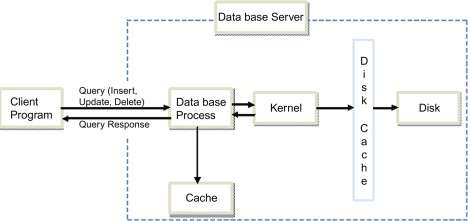
Encryption:
- Enable SSL/TLS encryption (`net. SSL) for secure communication between database clients and servers.
- Use encryption at rest mechanisms provided by the database (e.g., MongoDB Enterprise with encrypted storage engine).
4. Data Modeling and Schema Design
Flexible Schema:
- Leverage the flexibility of NoSQL databases to adapt schema designs based on application needs.
- Choose appropriate data structures (e.g., documents, key-value pairs) that align with your data access patterns.
Indexing:
- Create indexes (`db.collection.createIndex()` in MongoDB) based on frequently queried fields to improve query performance.
- Consider compound indexes for queries that involve multiple fields.
5. Performance Optimization
Query Optimization:
- Analyze query patterns and use Explain (`db.collection.explain()`) to optimize query plans.
- Utilize covered queries where possible to avoid fetching documents unnecessarily.
Scaling Strategies:
- Implement horizontal scaling (sharding) to distribute data across multiple servers (`shardCollection` in MongoDB).
- Configure replica sets for high availability and failover (`replication` in MongoDB).
6. Monitoring and Maintenance
Monitoring Tools:
Use built-in monitoring tools (`mongostat,` `mongo-top` in MongoDB) or third-party monitoring solutions to track database performance metrics. Set up alerts for critical thresholds (e.g., disk space, query performance).
Backup and Restore:
Implement regular backups (`mongodump,` `mongorestore` in MongoDB) and test restore procedures to ensure data recovery in case of failures.
7. Disaster Recovery and High Availability
Backup Strategies:
- Store backups securely in offsite locations or cloud storage services.
- Consider using point-in-time recovery features offered by the database.
Failover Configuration:
Configure replica sets with automated failover (`replication` in MongoDB) for high availability. Test failover scenarios to ensure readiness during unplanned outages.
Optimal Methods for Configuring NoSQL Database
Automation and Scripting
Use configuration management tools (e.g., Ansible, Chef, Puppet) for automated deployment and configuration of database instances. Maintain version-controlled configuration files to track changes and ensure consistency across environments.
Capacity Planning and Sizing
Perform capacity planning based on expected data growth, workload patterns, and performance benchmarks. Size hardware resources (CPU, RAM, disk space) appropriately to meet performance and scalability requirements.
Continuous Optimization and Tuning
Continuously monitor database performance and tune configuration settings based on performance metrics and workload changes. Review and optimize indexes, queries, and data models regularly to improve efficiency and reduce latency.
Compliance and Security Audits
Conduct regular security audits and compliance checks to ensure database configurations align with organizational security policies and industry regulations. Stay informed about database vulnerabilities and apply patches and updates promptly.
By following these crucial procedures and optimal methods, you can effectively configure a NoSQL database like MongoDB to meet your application’s requirements for performance, scalability, and security, ensuring reliable data storage and access capabilities.
Setting Up Fundamental NoSQL Database Monitoring
Setting up fundamental monitoring for a NoSQL database is crucial for ensuring optimal performance, identifying potential issues early, and maintaining availability. This is a systematic process for configuring minimal monitoring for a NoSQL database, using MongoDB as an example:
1. Monitoring Tools Selection
Choose appropriate monitoring tools based on your database type and environment. For MongoDB, some standard tools include:
- MongoDB Cloud Manager: Provides comprehensive monitoring, automation, and backup features for MongoDB.
- OpsManager: MongoDB’s on-premise solution for managing and monitoring MongoDB deployments.
- Third-Party Tools: Tools like Datadog, New Relic, Prometheus with Grafana, and Nagios can also integrate with MongoDB for monitoring.
2. Key Metrics to Monitor
Configure monitoring for essential metrics to gain insights into the health and performance of your NoSQL database:
- CPU Usage: Monitor CPU utilization to ensure the database server has sufficient processing power.
- Memory Usage: Track memory usage to prevent potential out-of-memory issues.
- Disk I/O Operations: To evaluate disk performance, keep an eye on read and write operations.
- Network Traffic: Measure incoming and outgoing network traffic to identify potential bottlenecks.
- Query Performance: To maximize database performance, keep an eye on query execution times and throughput.
3. Setting Up Alerts
- CPU and Memory Thresholds: Set alerts for high CPU or memory usage to prevent performance degradation.
- Disk Space: Alert on low disk space to avoid data loss due to disk full conditions.
- Replication Lag: Set alerts for excessive replication lag to troubleshoot potential synchronization issues.
- Query Performance: Alert on slow queries to optimize indexes or identify inefficient queries.
4. Dashboard Creation
Create customized dashboards to visualize key metrics and monitor database performance:
- Real-Time Monitoring: Display current status and trends of CPU, memory, disk usage, and query performance.
- Historical Analysis: Analyze historical data to identify patterns, trends, and potential issues over time.
- Capacity Planning: Use dashboards to forecast resource requirements based on growth trends and historical data.
5. Regular Health Checks and Maintenance
- Database Diagnostics: Periodically run diagnostic commands (`db.serverStatus()` in MongoDB) to gather detailed database statistics.
- Index Optimization: Review and optimize indexes based on query patterns and performance metrics.
- Backup Verification: Validate backups and restore procedures to ensure data recovery readiness.
6. Security and Compliance Monitoring
- Authentication Logs: Monitor authentication and access logs for unauthorized access attempts.
- Encryption Status: Verify that SSL/TLS encryption is turned on and keep an eye on metrics connected to encryption.
- Compliance Audits: Conduct regular audits to verify database configurations align with security policies and regulatory requirements.
7. Documentation and Training
Document monitoring procedures and provide training for operations and support teams:
- Documentation: Maintain documentation on monitoring setup, configuration settings, and troubleshooting procedures.
- Training: Provide training sessions to ensure team members understand monitoring tools, metrics, and alert responses.
By setting up fundamental monitoring for your NoSQL database, you can proactively manage and optimize database performance, ensure data availability, and promptly address potential issues to maintain a reliable and scalable database environment.
Examining More Complex Topics in NoSQL Databases
Examining more complex topics in NoSQL databases involves delving into advanced concepts and specialized use cases beyond basic setup and configuration. These are a few intricate subjects that merit further investigation:
1. Advanced Data Modeling
- Schema Design Strategies: Explore schema design patterns such as embedding vs. referencing in document-based databases like MongoDB.
- Polymorphic Schema Design: Handling flexible schema requirements where document structures may vary.
- Time-Series Data Modeling: Designing schemas optimized for time-series data storage and querying.
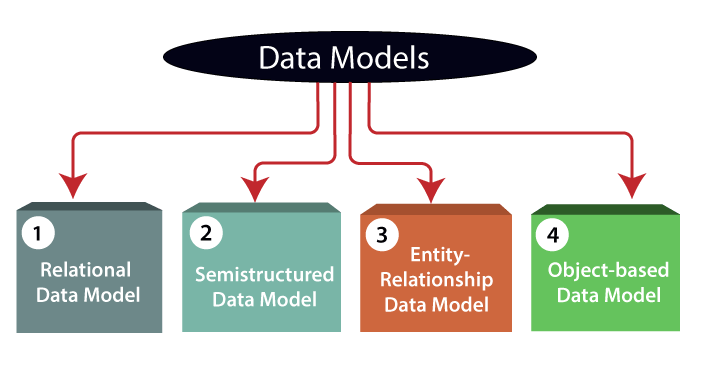
2. Distributed Systems and Scalability
- Sharding Strategies: Implementing shard keys and understanding data distribution across multiple shards.
- Consistency Models: Delving into eventual consistency, strong consistency, and the CAP theorem.
- Multi-Data Center Deployments: Configuring NoSQL databases for geo-distributed deployments and disaster recovery.
3. Performance Optimization
- Indexing Strategies: Advanced techniques for creating and managing indexes, including compound and multi-key indexes.
- Query Optimization: Using explain plans and performance profiling tools to optimize query execution.
- Caching Mechanisms: Implementing caching layers (e.g., Redis) to improve read performance and reduce database load.
4. High Availability and Fault Tolerance
- Replication Strategies: Configuring replica sets for fault tolerance and read scalability.
- Automated Failover: Setting up automated failover mechanisms to maintain service continuity during node failures.
- Data Durability: Ensuring data durability and ACID compliance in distributed environments.
5. Security and Compliance
- Data Encryption: Implementing encryption at rest and in transit to protect sensitive data.
- Access Control and Authentication: Fine-grained access control mechanisms and integration with LDAP or OAuth providers.
- Auditing and Compliance: Auditing database access and activities to meet regulatory compliance requirements (e.g., GDPR, HIPAA).
6. Advanced Analytics and Real-Time Processing
- Aggregation Frameworks: Leveraging NoSQL database capabilities for complex analytics and real-time data processing.
- Stream Processing: Integrating with frameworks like Apache Kafka for real-time event streaming and processing.
- Machine Learning Integration: Using NoSQL databases as storage backends for machine learning models and analytics pipelines.
7. Use Cases and Case Studies
- IoT and Sensor Data: Using NoSQL databases to manage and analyze massive amounts of data generated by IoT devices.
- Content Management and Personalization: Implementing content management systems and personalized recommendation engines.
- Social Networks and Graph Databases: Building graph-based applications for social networks and recommendation systems.
8. Tools and Ecosystem
- Containerization and Orchestration: Deploying NoSQL databases in containers (e.g., Docker) and managing with Kubernetes.
- Serverless Architectures: Leveraging serverless computing for scaling and cost efficiency with NoSQL databases.
- Integration with Big Data Platforms: Using NoSQL databases in conjunction with Hadoop, Spark, or Elasticsearch for analytics and data processing.
9. DevOps and Continuous Integration/Continuous Deployment (CI/CD)
- Infrastructure as Code: Automating database deployment and configuration using tools like Terraform or Ansible.
- CI/CD Pipelines: Integrating NoSQL database changes into CI/CD pipelines for automated testing and deployment.
10. Future Trends
- Blockchain and NoSQL Integration: Exploring the intersection of blockchain technology with NoSQL databases for secure and decentralized applications.
- Serverless NoSQL Databases: Adoption of serverless databases and their impact on scalability and cost management.
Exploring these complex topics will provide a deeper understanding of NoSQL databases, enabling you to architect scalable, performant, and secure solutions for modern data-intensive applications.
Conclusion
To sum up, NoSQL databases offer a flexible and scalable answer to the problems associated with contemporary data management. Their flexibility in schema design, ability to handle large volumes of unstructured data, and support for distributed architectures make them ideal for applications requiring agility and performance at scale. However, adopting NoSQL databases necessitates careful consideration of data modeling, scalability strategies like sharding and replication, and robust security measures such as authentication, encryption, and auditing.


